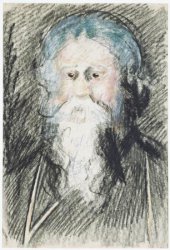Akshara Samskriti is the daughter of Carnatic musician Kiranavali and scientist-philosopher, Vidyasankar Sundaresan. This video was recorded on Nov 1, 2013, when Akshara was 4 years old. It was originally in multiple parts for educational video compilation, and has been put together as a single video here.
The 72 Melakartas are regarded as the parent scales in Carnatic music and serve the purpose of grouping similar sounding ragas/scales in the same category. It also helps create new scales which can then potentially evolve into full-bodied ragas.
The idea of classifying ragas that sound similar has existed over many centuries and were taken to a more definitive stage by 17th century musicologist Venkatamakhin. It was fine tuned further by Govinda to its present and more popular form. Nevertheless, the Melas propounded by Venkatamakhin continue to stay in vogue primarily through the compositions of well-known Carnatic composer, Muttuswami Dikshitar.
More on and from Kiranavali Vidyasankar: www.kiranavali.net >>

The world of sound is a tiny bubble in the silence of the infinite. The universe has its own language of gesture; it talks in the voice of pictures and dance. Every object in the world proclaims in the dumb signal of lines and colours, the fact that it is not a mere logical abstraction or a mere thing of use, but it is unique in itself, it carries the miracle of its existence.–Rabindranath Tagore quoted by Dinkar Kowshik in
Doodled Fancy, Visva-Bharati, Santiniketan 1999, p. 8
Related post
“Sampradaya is like a broad river and the bani is a tributary”: Umayalpuram Sivaraman on his 75 years of performance >>
Information about the persons, items or topics
- Find song lyrics
- Research & Custom search engines
- The Oxford Illustrated Companion to South Indian Classical Music
- Suppliers of books & musical instruments
Learn & practice more
- A brief introduction to Carnatic music (with music examples and interactive map)
- Free “flow” exercises on this website
- Glossary (PDF)
- Introduction (values in the light of modernity)
- Video | Keeping tala with hand gestures: Adi (8 beats) & Misra chapu (7 beats)
- Voice culture and singing
- Why Carnatic Music Matters More Than Ever
- Worldcat.org book and journal search (including Open Access)
